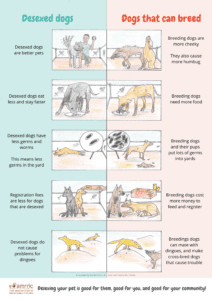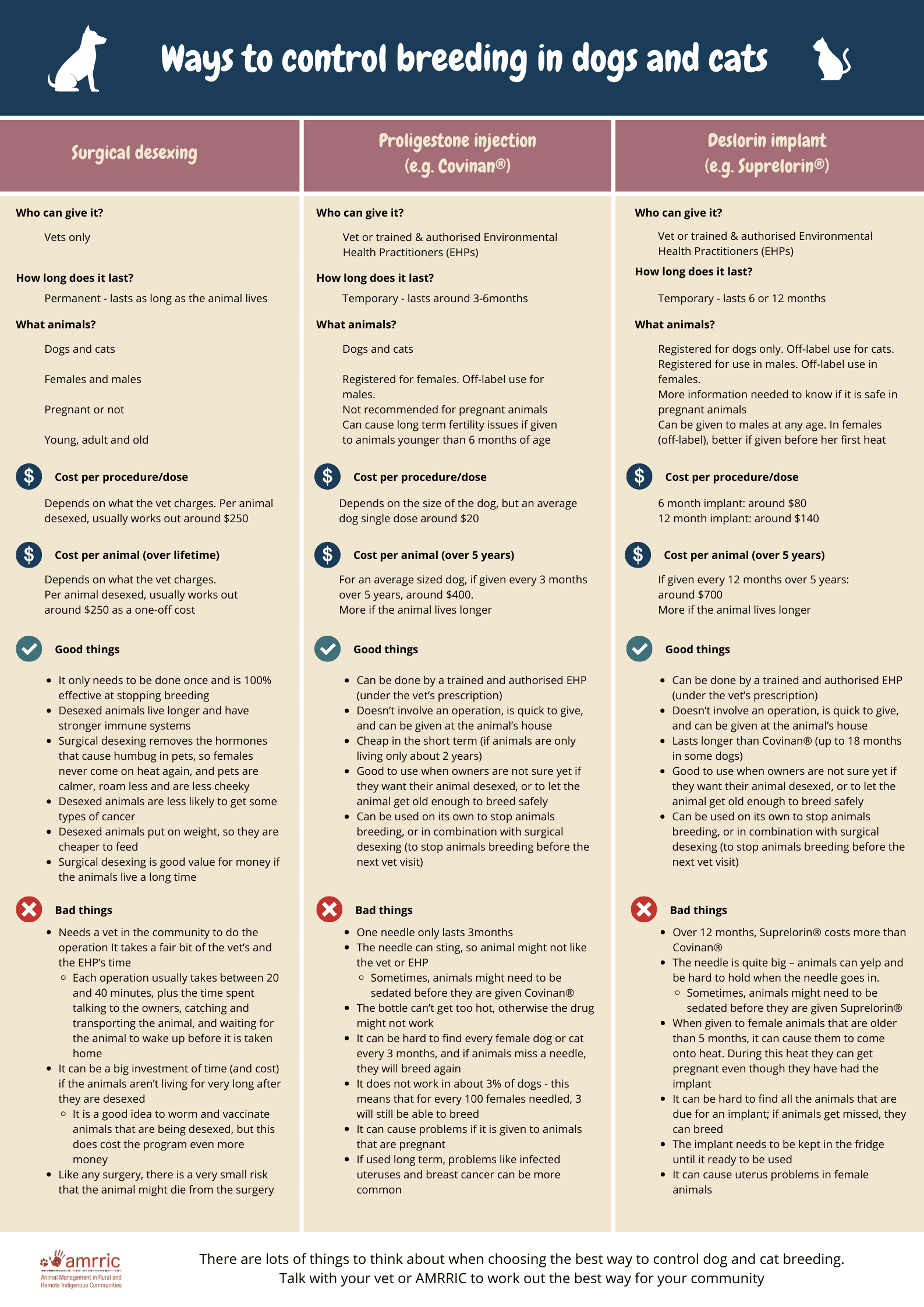CHAPTER TWELVE
Breeding control for dogs and cats
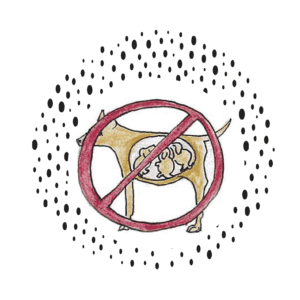
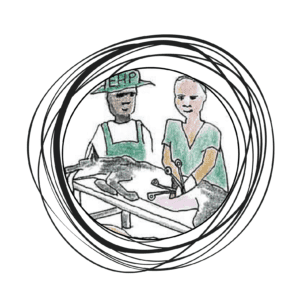
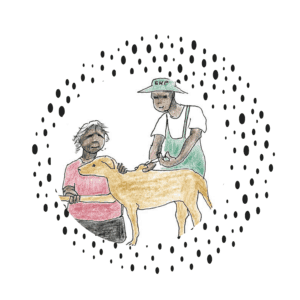
Controlling breeding as part of an animal health and management program
The most important parts of an animal health and management program are:
-
- anti-parasite treatments, and
- dog and cat breeding control.
Chapter 5, Chapter 6 and Chapter 7 focus on animal parasites and how to treat them.
This chapter focuses on controlling breeding in dogs and cats.
Warning – this chapter talk about ways to stop animals breeding. Some of the information might be women’s business or men’s business only. Talk to your vet or AMRRIC if you need to learn this information in private
In the past, culling was used as a form of dog population management in some communities, but:
-
- culling does not keep the numbers down in the long term, because animals can breed up again quickly
- culling is no longer an acceptable form of population control from an animal welfare perspective, and
- culling people’s pets is traumatic for both people and their animals.
Controlling breeding is an important part of animal health and management programs.
In most communities, animal breeding is controlled by surgical desexing or injectable contraceptives. Contraceptives are medicines that stop animals from being able to make babies.
Reasons to control animal breeding
Without breeding control, dog and cats will keep breeding up.
When this happens, owners don’t get much choice in the number of animals that live with them.
Controlling dog and cat breeding gives people a choice about the number of animals they want to live with.
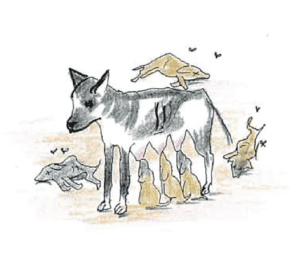
It also makes animals live longer, and this means that families can form longer, stronger and more loving relationships with their pets.
Controlling dog and cat breeding also helps with lots of other problems that pets can cause in the community:
-
- Dogs and cats fight more at mating time. This can lead to injury for the animals, and noise and stress for the community.
- Dogs and cats will roam further when they want to mate. When they roam, animals are more likely to get into trouble or be hit by a car. Desexed animals are more likely to stay home and stay safe.
- Dogs that can breed are more likely to form packs. Packs of dogs are very dangerous for people and other animals.
- Pregnant and young animals and are harder to keep healthy – their immune system isn’t as strong, and they can put lots of germs and parasites into the environment.
- Breeding animals eat more food than desexed animals. This costs the owner more money in food bills.
- Puppies, kittens and pregnant animals are more likely to have emergency health problems. They are more likely to need to see the vet or have animal welfare problems.
- Canine Transmissible Venereal Tumour (CTVT) can spread when dogs mate. Desexing is important to stop the spread of CTVT. See Chapter 8 for more information on CTVT.
- Some other types of cancer, like breast cancer, prostate and testicular cancer, are more common in animals that can breed. Desexing helps to reduce the risk of these cancers.
- Dogs that can breed might wander into the bush and breed with dingoes. This is bad for the dingo population and can cause problems with feral crossbreed dogs killing livestock and wildlife.
Sometimes, community members might not understand all of the reasons why it is good to stop animals from breeding.
As the EHP, you can talk about these reasons, and help your community to understand the benefits of breeding control for dogs and cats.
AMRRIC has lots of educational resources that you can download and use to share knowledge about stopping animals from breeding.
Posters can be used to help your community understand why it is good to get their pets desexed. Click here to download a copy of this poster. Poster courtesy AMRRIC.
Types of breeding control for dogs and cats
There are three main ways to stop animals breeding. One of these ways is by surgery, and the other two are by injections.
It is important for EHPs to know about the good and bad things about each different way to stop animals breeding.
One way may suit your community more than another way. A mixture of different ways to stop animals breeding might be best for your community.
You can talk to your vet and AMRRIC about what will be the best way to stop animals breeding in your community.
At the end of this chapter, there is also a table to help you compare the main ways to stop animals breeding.
Surgical desexing
This is sometimes called ‘desexing operation’, or just ‘the operation’.
Surgical desexing is the most common way that people in bigger towns and cities stop their animals from breeding.
It is also the main way of stopping pets breeding in many remote Indigenous communities.
In some places, councils or the state government have made laws that say that all dogs and cats must be surgically desexed, unless the animal’s owner is a registered breeder. These laws are sometimes called ‘mandatory desexing’.
Did you know?
Surgical desexing can be called lots of different things.
In females, it might be called a ‘spey operation’, or getting the dog or cat ‘speyed’. Sometimes people might say the vet gave her a ‘hysterectomy’ or ‘took out her girl parts’.
In males, it might be called a ‘castration’ or getting the dog or cat ‘castrated’. Sometimes people might say the vet ‘cut him’, made him a ‘bullocky’ or ‘took his nuts out’.
How does surgical desexing work?
The animal is given anaesthetic medicine that makes them go to sleep for a while. The anaesthetic might be given by a gas machine, or by injection. The anaesthetic medicine will make sure that the animal does not feel any pain during the surgery.
For females, the vet will make a cut through the belly (either on the side or tummy), and remove the animal’s uterus (baby bag).
For males, the vet will make a cut near the scrotum (ball bag), and remove the animal’s testicles (balls/nuts).
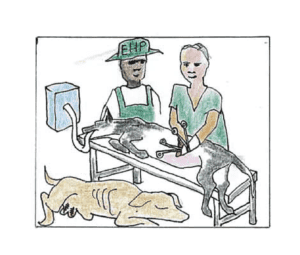
The animal will wake up about 1 hour after the operation, but might act a bit drunk for a couple of hours. Owners should try to keep their animal quiet for a few days. They should make sure the surgery wound stays clean and dry. Dogs shouldn’t be allowed to go swimming in the week after their surgery.
Surgical desexing in remote community animal health and management programs
Surgical desexing is the main method of dog and cat breeding control that is used in remote Indigenous communities.
Even though the up-front costs are higher, over the life of most animals, surgical desexing is the cheapest form of breeding control.
It is also makes the animals live longer and healthier.
AMRRIC recommends surgical desexing as the main form of dog and cat population control in remote Indigenous communities.
The table at the end of this chapter has more information about the good and bad things about surgical desexing.
You can talk to your vet or AMRRIC to learn more about surgical desexing.
Injectable contraceptive medicine – Proligestone (e.g. Covinan®)
Proligestone (sold by the brand name ‘Covinan®’) is an S4 contraceptive medicine, that can be given by needle to dogs and cats to control breeding. S4 medicines are Schedule 4 medicines. For use in animals, S4 medicines must be prescribed by a veterinarian.
It is a bit like the depo injection that some women get to stop them getting pregnant.
How does Covinan® work?
Covinan® is given to dogs and cats as a needle under the skin.
It can be used to temporarily stop animals coming on heat, or to stop a heat that has already started.
Covinan® usually lasts between 3 and 6 months. After this time, unless they get another needle, the dog or cat will be able to breed again.
Covinan® in remote community animal health and management programs
In some remote communities, Covinan® is used as the main way to stop dogs from breeding. For this sort of program, all female dogs are usually injected with Covinan® every 3 months.
In other communities, to stop animals breeding before the next vet visit, Covinan® might just be given to female dogs and cats that the vet did not get to desex on their last visit. This will stop them breeding until the vet can visit again and surgically desex them.
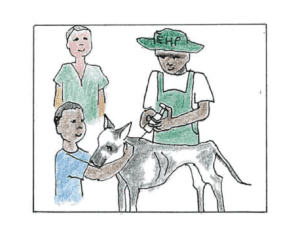
Because it is an S4 medicine, it is important that a vet prescribes and oversees the use of Covinan®.
The table at the end of this chapter has more information about the good and bad things about using Covinan® to control animal breeding.
As the EHP, you can talk to your vet or AMRRIC about whether or not Covinan® needles would be a good option to control dog and cat breeding in your community.
Injectable contraceptive implant – Deslorin (e.g. Suprelorin®)
Deslorin (sold as the brand name ‘Suprelorin®’) is an S4 contraceptive implant, that is injected under the skin.
It is a bit like ‘the rod’ that some women get to stop them getting pregnant.
Suprelorin® comes in two sizes of implant – one that lasts for about 6 months, and one that lasts for about 12 months.
Suprelorin® is only registered for use in male dogs. Vets doing community work do sometimes use it for female dogs, and sometimes both male and female cats, but these are ‘off label’ uses.
How does Suprelorin® work?
A few weeks after it is implanted, Suprelorin® stops male dogs from breeding. It also helps with the problems of fighting, roaming and being cheeky or aggressive.
It will also stop female dogs from breeding, but can take a few weeks to work.
Before the implant starts working it can cause females to come on heat (this usually happens about 2 weeks after the implant is given). If lots of females are given the implant at the same time, they can all come on heat together. The fighting and mating that happens when all the females are on heat can drive people crazy.
If it is going to be used in females it is best used in pups less than 5 months old, before their first heat.
Suprelorin® in remote community animal health and management programs
Suprelorin® can be used as a quick way of stopping young dogs breeding for 12 months. It is in their first year of life that young dogs are most likely to die from things like parvovirus, getting run over and cane toad poisoning.
By the time they are 18 months old, most dogs have learned how to survive in the community.
If your community has problems with lots of young dogs dying, surgical desexing is a big cost that might be wasted if the animal dies.
For dogs less than 18 months old, Suprelorin® might be a better way of stopping them from breeding. After they are 18 months old, these animals can then be surgically desexed.
Depending on how many pups are dying, Suprelorin® and then surgical desexing might work out cheaper in the long term.
Because it is an S4 medicine, it is important that a vet prescribes and oversees the use of Suprelorin®.
As the EHP, you can talk to your vet or AMRRIC about whether or not Suprelorin® implants would be a good option to control dog and cat breeding in your community.
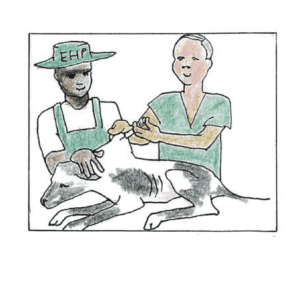
Choosing the best way to control breeding in your community
There are many different things to think about, when choosing the best way to control dog and cat breeding.
The decision on which way to control dog and cat breeding should be a shared one, made by the whole EHP team. This might include you (the EHP), your vet, AMRRIC, your management and EHOs.
Below, there is a table that will help you to compare the different ways of controlling breeding and dogs and cats. Click on the image to download the table.
